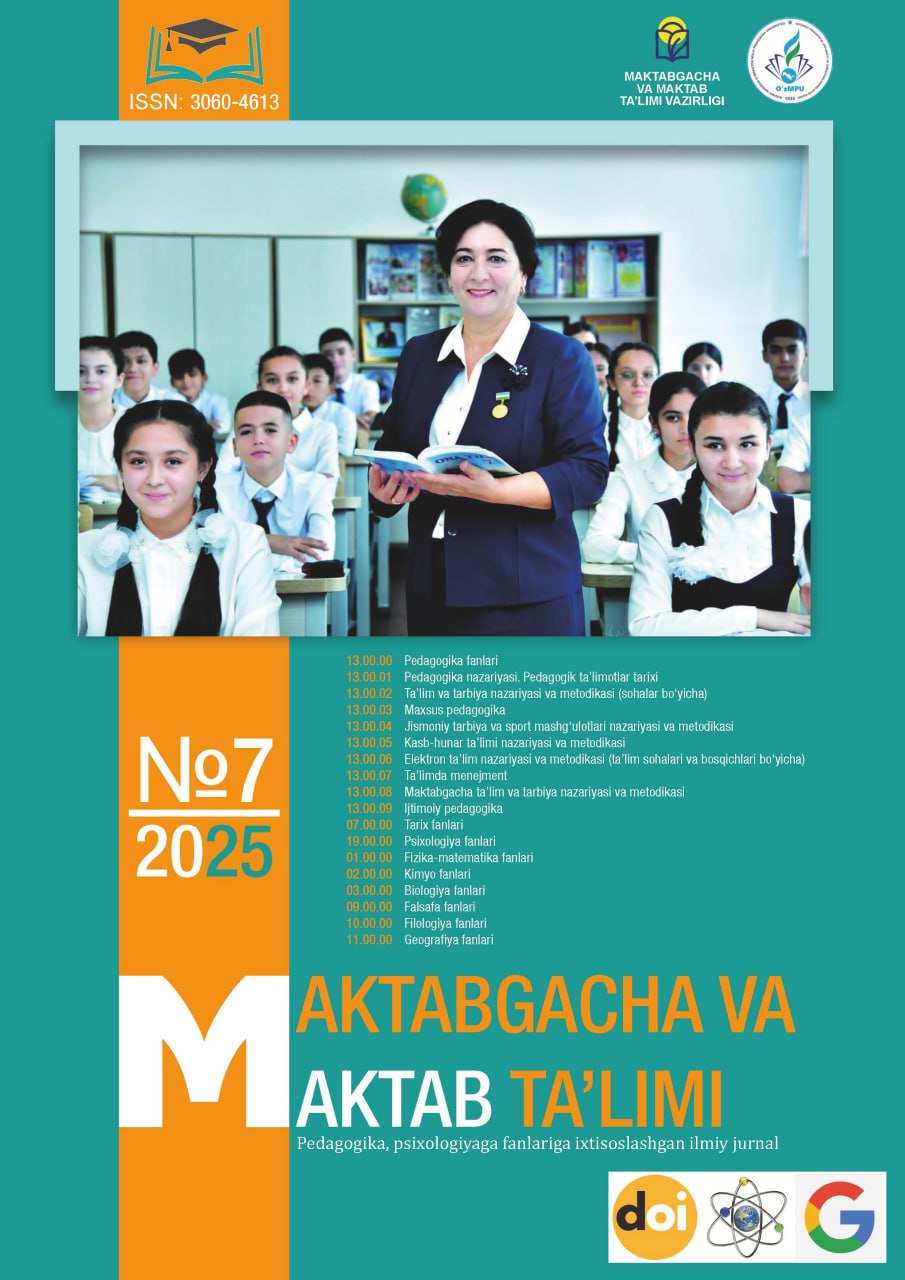3D Modeling of Virtual Chemical Laboratories
DOI:
https://doi.org/10.5281/zenodo.15812086Ключевые слова:
virtual laboratories, chemistry education, e-learning, simulation, STEM education, BlenderАннотация
The integration of 3D modeling into virtual chemical laboratories represents a significant advancement in how
chemistry is taught, learned, and applied in research. This article explores the development and application of 3D models
for simulating chemical laboratory environments using Blender, a powerful open-source 3D modeling software. By creating
detailed and interactive virtual representations of laboratory equipment, instruments, and chemical setups, we can
provide a safe, cost-effective, and accessible alternative to traditional hands-on laboratory work. The article discusses
the technical aspects of creating 3D models, the educational benefits of virtual laboratories, and the potential of such
simulations to enhance the understanding of complex chemical concepts and reactions. Additionally, the study highlights
the role of virtual laboratories in improving safety–especially in environments involving hazardous materials or reactions–
and their potential for remote learning and distance education. The findings suggest that 3D modeling can significantly
improve both the pedagogical and experimental aspects of chemistry education, offering a scalable solution for diverse
educational and research contexts
Библиографические ссылки
Josephsen, K. (2006). Simulation of laboratory assignments to support students’ learning of introductory inorganic
chemistry. Chemistry Education Research and Practice, 7(4), 266–279.
Temel, H., Oral, B., & Avanoglu, Y. (2000). Kimya öğrencilerinin deneye yönelik tutumları ile titrimetri deneylerini
planlama ve uygulamaya ilişkin bilgi ve becerileri arasındaki ilişkinin değerlendirilmesi. Çağdaş Eğitim Dergisi, (264),
–38.
Sandra, D. P., Liliana, M. P., & A. S. P. (2012). Virtual reality as a tool in education. In IADIS International Conference
on Cognition and Exploratory Learning in Digital Age (pp. 295–298).
Hachet, M. (2003). Interaction avec des environnements virtuels affichés au moyen d’interfaces de visualisation collective
(PhD thesis, Université Bordeaux I).
Ali, N., Ullah, S., Rabbi, I., Javed, M., & Zen, K. (2014). Multimodal virtual laboratory for student learning enhancement
in chemistry education. In International Conference on Recent Trends in Information and Communication Technology
(IRICT-2014, Malaysia).
Olbrich, S., & Jensen, N. (2004). Development of a virtual laboratory system for science education and the study of
collaborative action. In Proceedings of the World Conference on Educational Multimedia, Hypermedia and Telecommunications.
Kearney, M., & Treagust, D. F. (2001). Constructivism as a referent in the design and development of a computer program
which uses interactive digital video to enhance learning in physics. Australian Journal of Educational Technology,
(1), 64–79.
Ullah, S. (2011). Multi-modal assistance for collaborative 3D interaction: Study and analysis of performance in collaborative
work (PhD thesis, University of Évry, France).
Загрузки
Опубликован
Выпуск
Раздел
Лицензия
Copyright (c) 2025 MAKTABGACHA VA MAKTAB TA’LIMI JURNALI

Это произведение доступно по лицензии Creative Commons «Attribution» («Атрибуция») 4.0 Всемирная.

